History & its Importance
Price ladders, also known as Depth of Market (DOM), first became popular in the late 1990s and early 2000s in the US futures markets. Platforms like CQG, TT (Trading Technologies), NinjaTrader, and Sierra Chart pioneered the ladder interface, which quickly became the standard tool for professional traders in futures, commodities, and options.
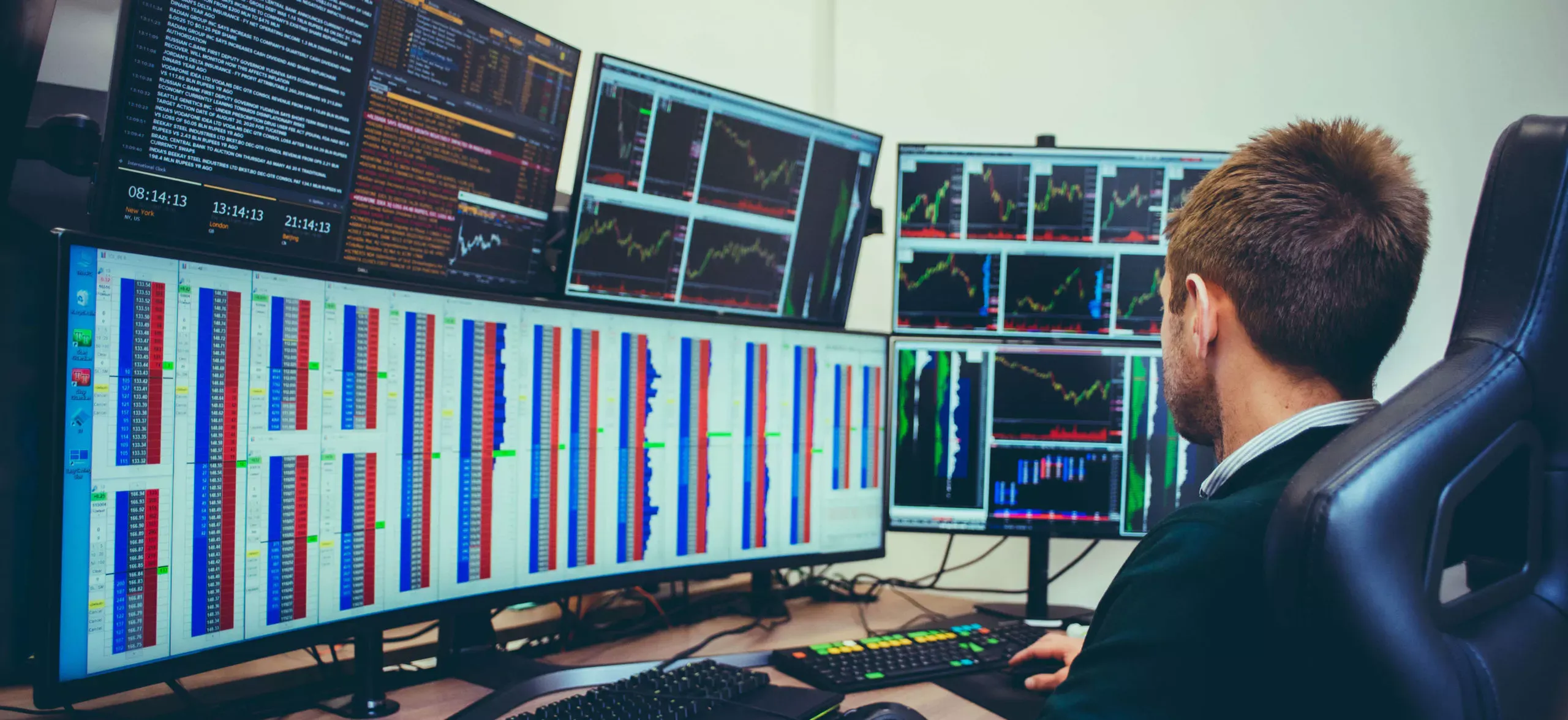
Image Source Link Today, global institutions and proprietary trading firms such as Axxela, Future First, Jump Trading, and DRW rely on ladders for ultra-fast order execution and order flow analysis. These firms trade billions of dollars in derivatives daily, and the Price ladder is central to their execution strategy.
In India, price ladders are not yet widely known. Recently, OptionX has introduced this trading innovation to Indian retail traders, making institutional-grade execution and market visibility accessible to everyone. With F&O volumes on NSE (especially Nifty and Bank Nifty options) at record highs, this brings a timely advantage for the Indian market.
What are its benefits:
1. Speed and Efficiency – Allows placing, modifying, canceling, and exiting orders with a single click, which is crucial for scalping or rapid execution.
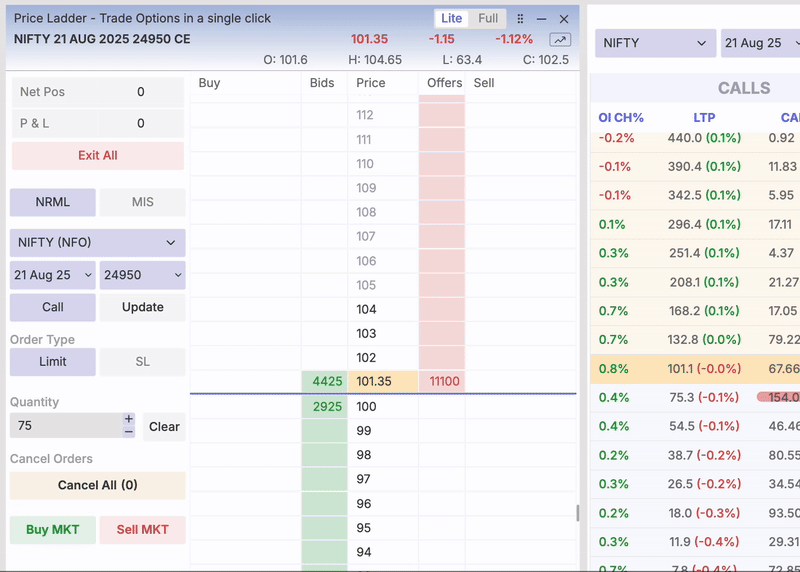
2. Risk Management: Price ladders help traders manage risk by enabling clear entry and exit strategies. They allow for quick placement of bracket, cover, and stop-loss orders, which protect trades and minimize losses. From enabling auto SL trailing to manually trailing your stoploss all are made easy for a trader.
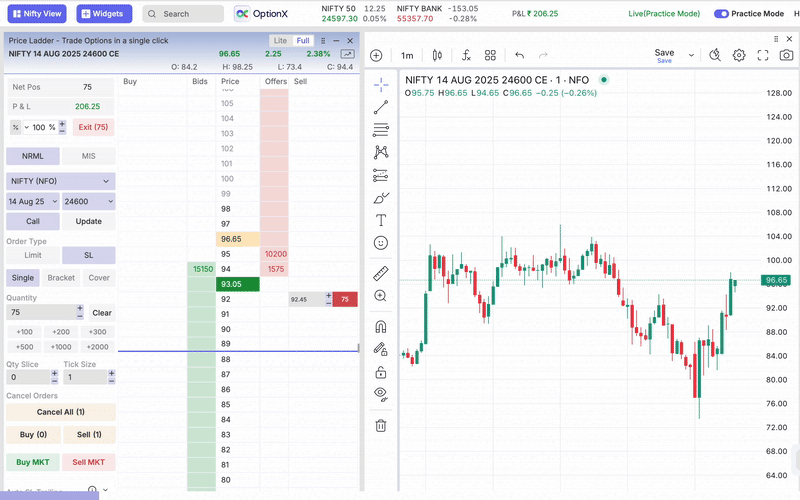
3. Visual Clarity and Market Depth: Price ladders show real-time bids and offers at each price level, giving traders a clear view of liquidity and helping them make better trading decisions.
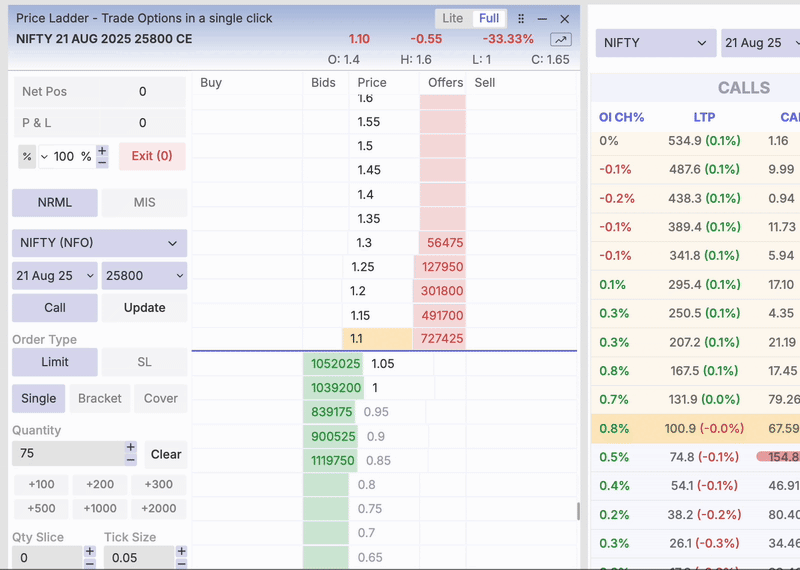
4. Multiple Entry Points and Trade Management: Price ladders let traders scale into positions by placing multiple limit orders across different price levels, balancing profit potential with risk control. They also make it easier to monitor and execute complex multi-leg option strategies with precision.
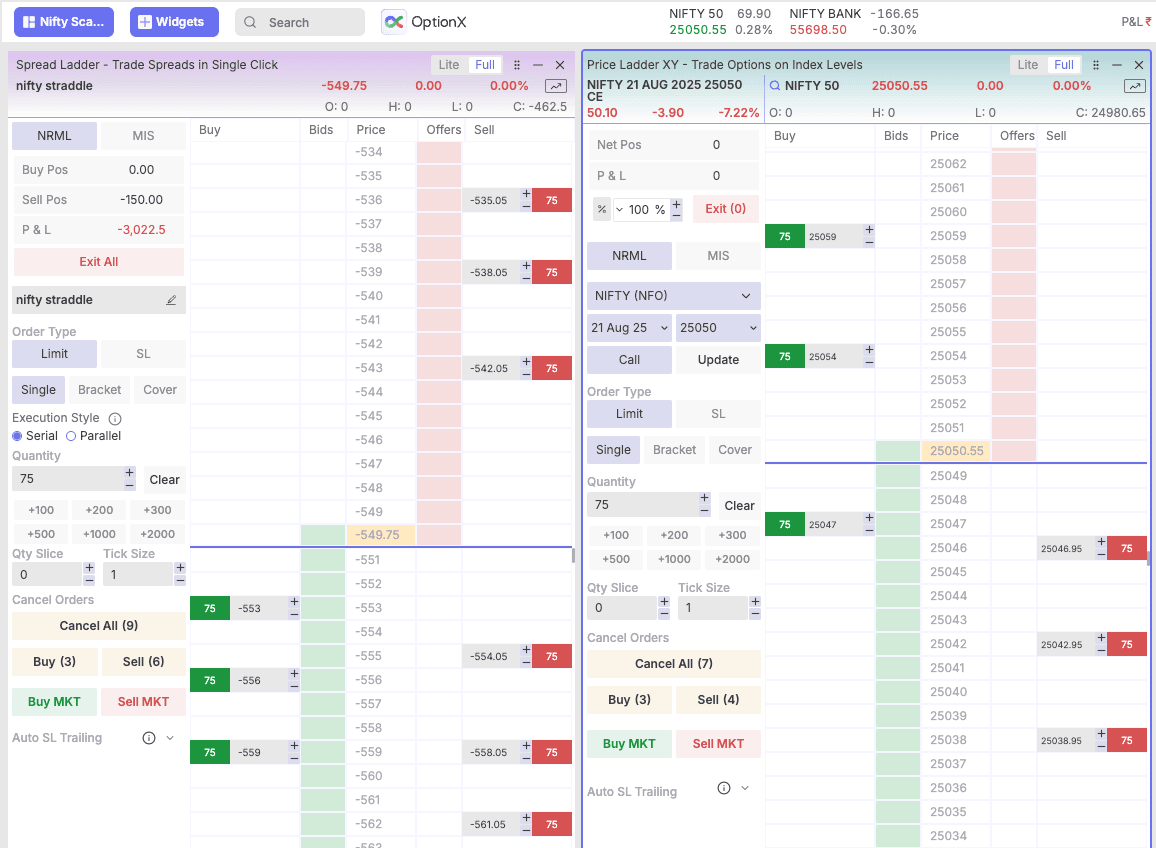
5. Psychological Comfort: In fast markets, the clear and structured view of the ladder reduces stress, builds confidence, and helps traders stay disciplined.
Price Ladder vs. Traditional Order Placement
Types of Price Ladders
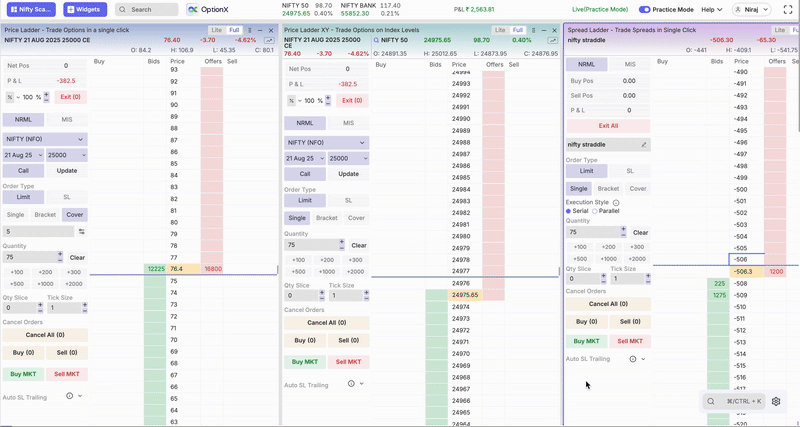
- Price-based ladder
- Index-based ladder
- Strategy-based ladder
1. Price ladder
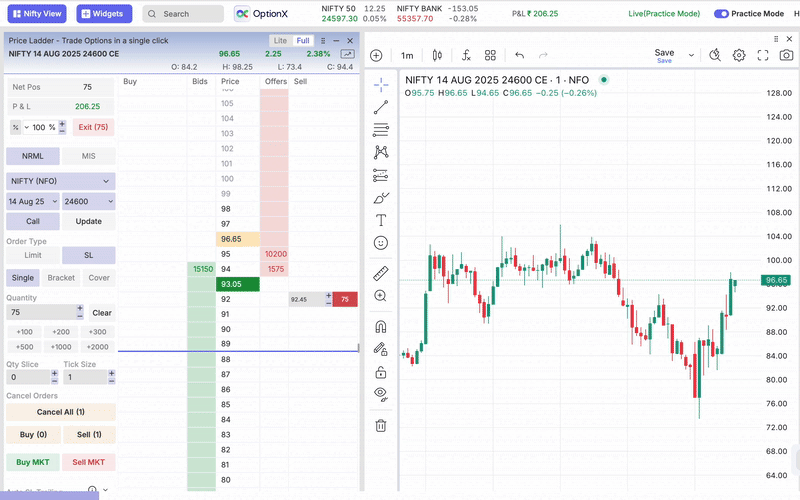
The Price-based ladder is the standard type of price ladder. It displays the prices of the selected instrument, such as a Bank Nifty option, and allows traders to place buy or sell orders directly at those price levels shown on the ladder.
30-Point Quick Scalping
In a price-based ladder strategy, the trader scalps a Nifty 25,000 Call Option, aiming for a 30-point profit.
- 1 Enters instantly at ₹100 using the ladder when liquidity builds.
- 2 Places a cover order with an auto-trailing stop-loss.
- 3 As the option premium rises towards ₹130, the trailing stop adjusts upward.
- 4 If the market turns, the position exits at the trailed stop, ensuring profits are locked in.
This seamless combination of speed, precision, and automated risk control is only possible on a Price Ladder, where real-time market depth and one-click order placement give traders a sharp execution edge.
2. Price ladder XY
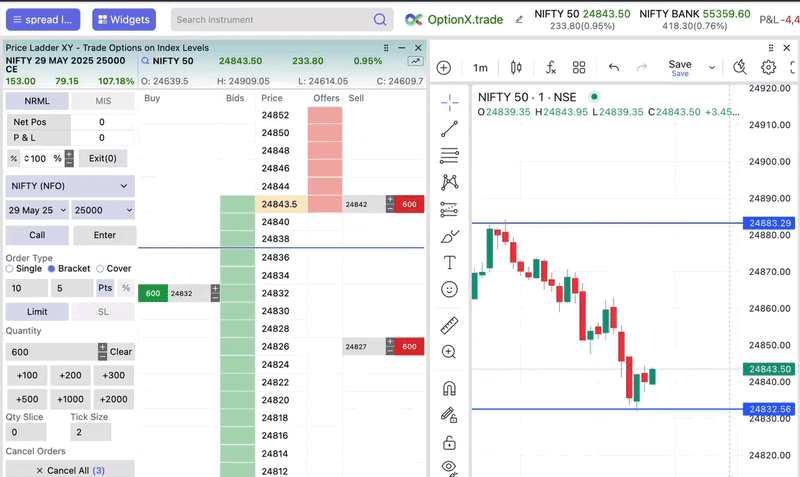
The Index-based ladder (Price Ladder XY) is different in that it tracks the price of one instrument but executes orders in another. For example, a trader may want to buy a Nifty option when the Nifty index itself reaches a specific level, and this ladder makes that possible.
Breakout Bracket Strategy
In an Index-based Ladder Bracket Strategy, the trader links option trade execution directly to index levels rather than option premiums.
- Plan: Buy a Nifty 25,200 Call Option only if Nifty Index falls to 25,000 (support zone).
- Using the ladder, the order is automatically triggered the moment Nifty touches 25,000.
- A bracket order is placed with a stop-loss at 24,950 and target at 25,200.
- Entry and exit happen based on index levels, not just option price fluctuations.
This approach ensures precise execution with predefined risk-reward, giving traders discipline, speed, and accuracy that manual execution cannot achieve.
Price Ladder XY gives traders an advantage where two instruments move in relation, such as hedging Nifty with Bank Nifty or exploiting spreads, whereas traditional tools restrict you to one instrument at a time.
3. Spread ladder
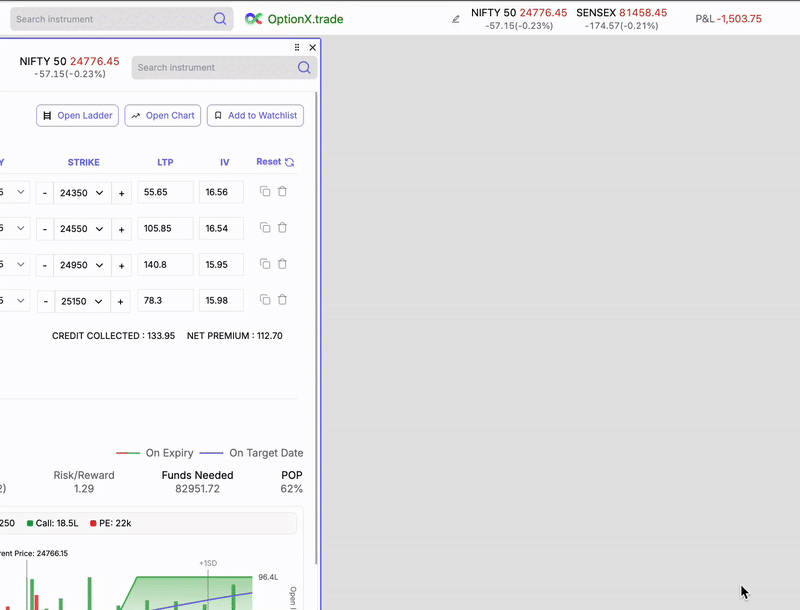
The Spread Ladder simplifies managing multi-leg option strategies like Iron Condors or Spreads by giving a unified premium view. Traders don’t need to calculate average prices manually—it’s done automatically. They can place stop-loss, auto-trail, and manage exits seamlessly, even if extra positions exist in the same leg outside the strategy. This reduces complexity, ensures precision, and allows traders to focus on execution rather than calculations.
Nifty Iron Condor with Spread Ladder
Nifty is trading near 24,980, heading into the weekly expiry. You launch an Iron Condor expecting range-bound action:
Position Setup
- Sell 25,200 CE & 24,800 PE
- Buy 25,300 CE & 24,700 PE
- Spread Ladder instantly shows the net premium of ₹120 for the full setup—no need to track each leg separately.
- If Nifty stays between 24,820–25,150 and closes at 24,980, the premium drops to ₹40, locking a profit of ₹80 per lot (₹4,000 for 50 qty).
- If volatility spikes and premiums rise to ₹160, your trailing SL triggers at ₹150— protecting profits instead of turning gains into losses.
- Even with overlapping trades, the Spread Ladder exits the entire strategy in one click—no confusion or manual adjustments.
This clarity, automation, and profit-focused execution show how the Spread Ladder helps traders maximize gains in favorable conditions while protecting them in volatility.
Spread Ladder turns complex multi-leg strategies into one manageable position, while a regular trading tools treats them as separate trades, leaving traders to juggle calculations and risk manually.